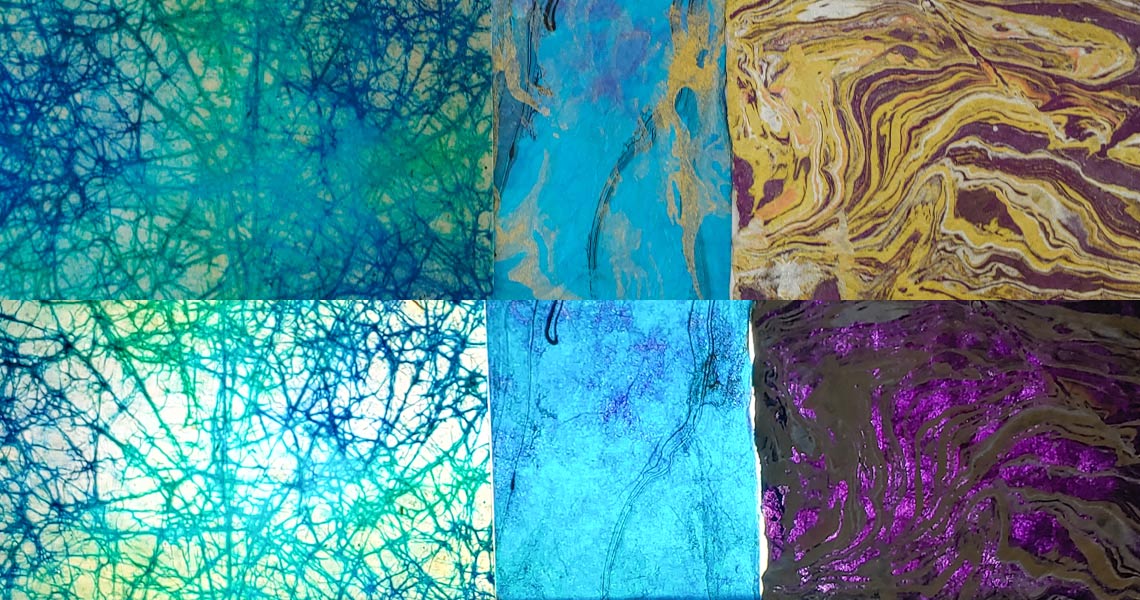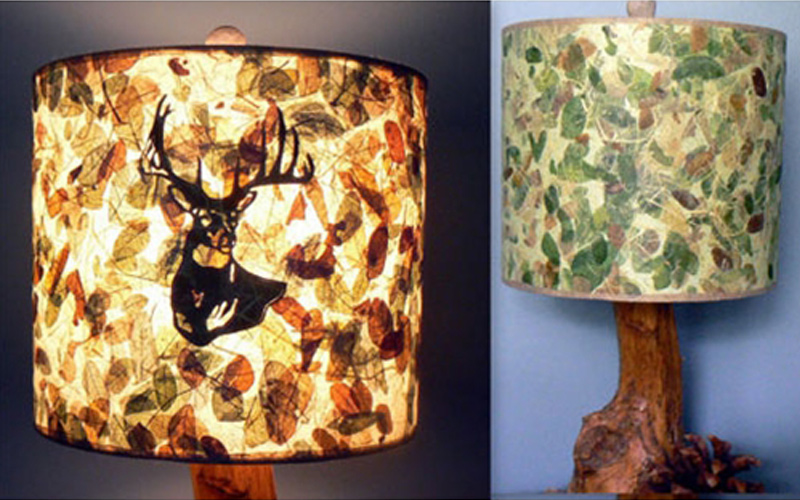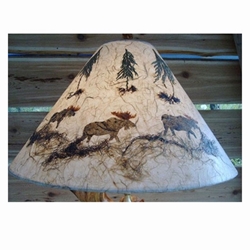Your shopping cart is currently empty.
Choosing Decorative Paper for Lampshades

Choosing the Right Decorative Paper for Lights and Lampshades
An incredibly popular way to change the look and feel of a room is to use decorative paper to either create a lampshade or cover one. There are many tutorials available online to help with the specifics on how to create a lampshade with paper. This article is to help decide which papers will provide the look and feel you want for your lamp.Translucency
In deciding which paper is right for your luminary, one of the first decisions you need to make is how much light do you want to pass through the paper. This is called translucency. The easiest way to gauge translucency is by comparing the weights of different papers. Decorative papers are typically measured in grams per square meter (GSM). The lower the GSM, the lighter weight the paper is and the more light will pass through. In the picture below you can see the difference between 10 GSM, 25 GSM, 40 GSM White Unryu Papers and Bleached White Mulberry Paper. This picture was taken on a black glass background with no backlighting.

Color
A central feature in decorating a space is color. When making a lampshade, you must consider how both the color and the translucency interact with each other. If a paper has a lot of translucency, the lamp will cast the color of the shade throughout the room. An opaque paper won’t broadcast the color of the paper, but will direct the light downwards and out of the shade and not through the lampshade.
You can use color and translucency to your advantage in creating an ambiance to the room. If you pair a translucent paper with a neutral color and a soft white light bulb, you will create a warm and comfortable feel to the room. Combining a daylight or cool white light bulb with a bright primary color will create a bold, festive, eye-catching ambience.
If you are repairing a lamp or are looking for a basic white or off-white paper for your lampshade, the most popular paper is either the Bleached or Unbleached Mulberry Papers. These papers have a uniform mulberry pulp throughout and come in rolls that are 37 inches wide for those large format projects.
Designs and Patterns
Using a paper with a screenprinted design or pattern is a great option when you want the lamp to be decorative, even when the light is off. Choosing a paper with a pattern or design on it is really up to your own taste. However, most of the papers with screenprinted patterns are going to be heavier papers which will block most of the light coming through the shade. There are some marble papers, such as the Thai Momi Marbled Papers that are a great option for integrating a design that shows both when the light is illuminated and when it is dark. Below is a picture comparing three marbled papers and how they look when the light bulb is not lit and when it is lit. You can see how the look and design of the papers changes as light is applied.

Layering
One of the more interesting ways to use paper in a lampshade is to layer different papers. By layering different papers, the translucency/opacity changes. The colors also will blend together into new and unique shades. You can even cut opaque papers into shapes and designs and layer a more translucent paper over the top. When the light is off, you just see the color and pattern of the top layer of paper, but when the light is turned on, the hidden shapes and designs created by the opaque paper show through. Below is an image of a beautiful lampshade utilizing layering made by Diane, one of our customers.

Fire Resistance
The most important safety concern when making lampshades out of paper is that of potential fire. Paper is flammable and light bulbs create heat. The combination of heat and paper has the possibility of igniting a fire. There are 3 primary methods to reduce any fire risk:
1) The easiest way to combat the danger is to use only LED or compact fluorescent light bulbs in your light. These types of light bulbs create up to 90% less heat than traditional incandescent or halogen light bulbs. In addition to being safer, they use far less electricity which is beneficial for the environment and your utility bills.
2) You can also treat the paper with a fire-retardant spray. An online search will provide many different options.
3) Finally, you can use a plastic lampshade as a base and cover it using decorative paper.
As you can see, using paper to change the look and lighting of a room is easily accomplished using decorative papers. You are only limited by your own creative imagination. Click on the links below to purchase commonly used papers for lampshades.
Bleached Mulberry Paper
Unbleached Mulberry Paper
Unryu Paper
Natural Inclusions Paper
Marbled Momi Paper
The pictures of completed lampshades were provided by our customers using the papers they purchased from Mulberry Paper and More. The images are used with their permission and should not be reproduced without their consent. Those artists are:
- Debi Luksus
- Robin Wanke
- Donna Palinkx
- Barbara Zickefoose
- Timothy McCubbin













